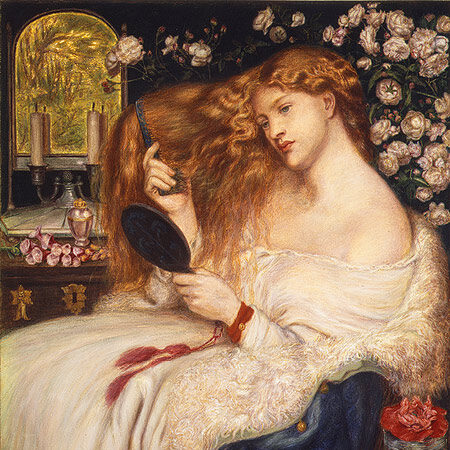So, 90s nostalgia is officially back in swing. Pop radio is playing non-stop 90s throwback sets, rock is getting grungier by the day, and, call it a premonition, but I smell a new boy band on the horizon. So, to celebrate the long-overdue death of synthpop revival, let’s take a look at one of the more low-key trends of the Clinton era: Lilith Fair.
Lilith Fair was a series of annual concerts from 1997 featuring entirely female solo artists and female-led bands. Founded by singer-songwriter Sarah McLaughlin (more on her later), the concerts were ostensibly open to woman from all genres and backgrounds, but the phrase “Lilith Fair” has come to be used as a neutral to negative descriptor for female acoustic alt-rock and folk. Artists like Fiona Apple, Jewel, the Indigo Girls, Lisa Loeb, Paula Cole, and several others had top 40 hits with styles that could conceivably be called Lilith Fair. However, the artists biggest stars, Ani DiFranco, Tori Amos, and Alanis Morrissette steered clear of any association with the phrase. How did such an influential series with such big names attached come by such a stigma?
In The Beginning…
There was Kate Bush. Seriously this woman is like the Velvet Underground indie pop. Talked to death as her music has been in the last couple years, her brand of defiantly feminine and emotional music, the subversive counter to punk rebellion, is the easiest touchstone for the songwriting and political bent of Lilith Fair.
After Bush, our Abraham and Sarah (Lilith and Sarah?) for Lilith Fair are Tori Amos and Ani DiFranco. These two women both began their careers as indie artists in the late 80s before skyrocketing in popularity in the early 90s. Both were seen as angry, personal and righteously feminist, which is to say their music was received rather poorly by the male establishment at first, Tori for her perceived classicism and Ani for her political fervor and sanctimony. These are, to a limited degree, valid critiques, but in the context of the actual artists being discussed, they miss the mark. However, the leagues of imitators would not always rise above these flaws.
Sarah McLaughlin
To continue my mangled biblical metaphor, I guess Sarah McLaughlin is Jesus. She is the one who first brought followers to the cause, turning a few female-friendly trends into a full-fledged movement. However, unlike Jesus, McLaughlin has been all but forgotten by the movement she founded. Her music has never had a real critical reappraisal in the way that Alanis or Amos had, and her hits haven’t endured like Jewels or Lisa Loeb’s. Except for one, that is:
iN tHE ARMMMMS oF an aNGel…..
Yes McLaughlin wrote the god tier meme anthem of sad puppies, “Angel,” a mammoth hit used in animal shelter ads to this day. This song conveys the primary reason Lilith Fair has had a mixed reaction. While it’s incredible musical pedigree pushed the envelope of what women were allowed to be, Lilith Fair came to represent the corporatization and eventual death of this brand of radical feminism. Which is a shame, because a lot of the artists who performed at the concerts were extremely talented. Even McLaughlin had a few good albums under her belt. This wasn’t the only problem though.
Where Else it Went Wrong
The relative blandness of some Lilith Fair artists was not the only problem though. Overall, the style seemed to take musical inspiration from Ani DiFranco and lyrical inspiration from Tori Amos, which is probably the inverse of how it should have gone. DiFranco was a one-woman poet with a guitar type, whose music was nearly always subservient to her lyrics. Amos was a Mozart-level piano prodigy who attended a classical conservatory at the age of 7, and while her lyrics were never bad, they always played second fiddle to the music. Less original and inspired musicians in the style can sometimes feel like a combination of the influence’s weaknesses, without the strengths that made their idols so beloved.
I also feel obliged to mention that this movement was *extremely* white. Not exclusively white, mind you, but at a time when Missy Elliot, Lauren Hill, Foxy Brown, and Mary J Blige were tearing up the charts with a very similar spirit to Lilith Fair, I feel like the organizers could have done a little better than 1-2 mainstage black artists per year. They did have Erykah Badu though, so that’s cool.
Lilith Fair Good Actually?
I’ve spent a long time on the flaws of Lilith Fair, mostly to explain why the concerts have a muddled reputation in recent years, but I want to make clear that the style was overall an amazing thing for music. Explicit focus on women as artists was a bold thing in the mid-90s, and musicians from Liz Phair to the (no longer Dixie) Chicks to Fiona Apple would likely not have the careers they do without the massive publicity from these concerts.
Lilith Fair casts long shadows over women in indie. While the Riot Girl movement has arguably cooled down, the tradition of acoustic indie woman is as relevant today as it was in the mid-90s. If you haven’t heard of any of the artists mentioned in this article, give them a shot. Even the worst of them have something interesting and unique to offer.

